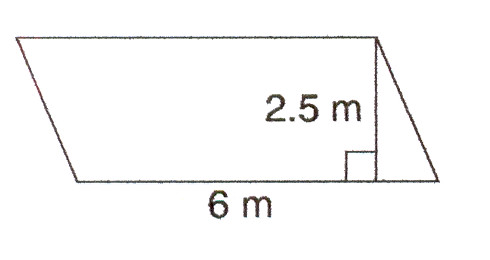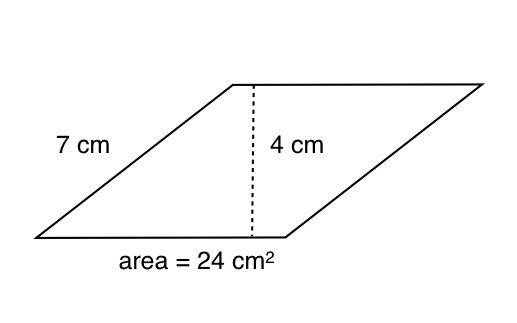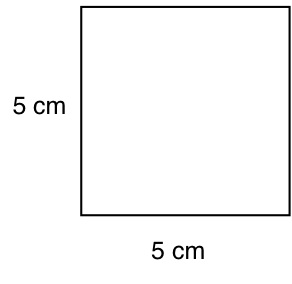Area And Perimeter - Parallelograms, Squares, And Rectangles

Geometry quiz on finding the area and perimeter of parallelograms, squares and rectangles
- 1.
Find the area of a rectangle with sides 13 inches and 10 inches.
- A.
23 sq inches
- B.
130 sq inches
- C.
46 sq inches
- D.
33 sq inches
Correct Answer
B. 130 sq inchesExplanation
The area of a rectangle is calculated by multiplying the length by the width. In this case, the length is 13 inches and the width is 10 inches. Multiplying these two values together gives us 130 square inches.Rate this question:
-
- 2.
What is the perimeter of a rectangle with length 13 and width 10?
- A.
23 units
- B.
130 units
- C.
46 units
- D.
33 units
- E.
None of the above
Correct Answer
C. 46 unitsExplanation
The perimeter of a rectangle is calculated by adding up all four sides of the rectangle. In this case, the length of the rectangle is 13 units and the width is 10 units. To find the perimeter, we add twice the length and twice the width: 2(13) + 2(10) = 26 + 20 = 46 units. Therefore, the correct answer is 46 units.Rate this question:
-
- 3.
What is the area of a parallelogram with base 30 ft and height 25 ft?
- A.
55 sq ft
- B.
187.5 sq ft
- C.
375 sq ft
- D.
750 sq ft
Correct Answer
D. 750 sq ftExplanation
The area of a parallelogram is calculated by multiplying the base length by the height. In this case, the base length is given as 30 ft and the height is given as 25 ft. Multiplying these two values together gives us 750 sq ft.Rate this question:
-
- 4.
The area of a parallelogram with base of 40 cm and height of 0.5 cm is _________.
- A.
200 sq cm
- B.
20 sq cm
- C.
10 sq cm
- D.
15 sq cm
Correct Answer
B. 20 sq cmExplanation
The area of a parallelogram is calculated by multiplying the base by the height. In this case, the base is given as 40 cm and the height is given as 0.5 cm. Multiplying these values together gives us an area of 20 sq cm.Rate this question:
-
- 5.
Find the area of the following.
- A.
15
- B.
8.5
- C.
7.5
- D.
3.5
Correct Answer
A. 15 -
- 6.
What is the perimeter of this parallelogram?
- A.
19 cm
- B.
24 cm
- C.
30 cm
- D.
15 cm
Correct Answer
C. 30 cm -
- 7.
What is the area of this parallelogram?
- A.
16 cm²
- B.
28 cm²
- C.
19 cm²
- D.
32 cm²
Correct Answer
D. 32 cm²Explanation
The area of a parallelogram is calculated by multiplying the base length by the height. Since the question does not provide the measurements of either the base or the height, it is not possible to determine the area of the parallelogram. Therefore, an explanation for the correct answer of 32 cm² is not available.Rate this question:
-
- 8.
What is the perimeter of this parallelogram?
Correct Answer
26 cm
26cm
26Explanation
The given answer states that the perimeter of the parallelogram is 26 cm. This means that the sum of all the sides of the parallelogram is equal to 26 cm. However, without any additional information or context about the parallelogram, it is not possible to determine if this answer is correct or not.Rate this question:
- 9.
What is the perimeter of this square?
- A.
12 cm
- B.
48 cm
- C.
576 cm
- D.
24 cm
Correct Answer
B. 48 cmExplanation
The perimeter of a square is the sum of all its sides. In this case, since the given answer is 48 cm, it means that each side of the square measures 12 cm. Therefore, the perimeter of this square is 48 cm.Rate this question:
-
- 10.
What is the perimeter of this rectangle?
Correct Answer
32 cm, 32cm, 32Explanation
The area of a rectangle is given by the formula A = l * w, where A is the area, l is the length, and w is the width.
In this case, the area is 60 cm² and the width is 6 cm. We can use the formula to find the length:
l = A / w = 60 cm² / 6 cm = 10 cm
The perimeter of a rectangle is given by the formula P = 2(l + w), where P is the perimeter, l is the length, and w is the width.
Substituting the values we found, we get:
P = 2(10 cm + 6 cm) = 2(16 cm) = 32 cmRate this question:
- 11.
What is the perimeter of this rectangle?
Correct Answer
32 cm
32cm
32Explanation
The perimeter of a rectangle is the sum of all its sides. In this case, the given answer of 32 cm suggests that all four sides of the rectangle are equal in length. Since a rectangle with equal sides is a square, it can be concluded that the length of each side is 32 cm. Therefore, the perimeter of this rectangle is 32 cm.Rate this question:
- 12.
What is the area of this rectangle?
- A.
26 cm²
- B.
13 cm²
- C.
58 cm²
- D.
40 cm²
Correct Answer
D. 40 cm² -
- 13.
What is the perimeter of this rectangle?
- A.
26 cm
- B.
13 cm
- C.
40 cm
- D.
58 cm
Correct Answer
A. 26 cmExplanation
The perimeter of a rectangle is calculated by adding all four sides. In this case, the only option that matches the given perimeter of 26 cm is the first option, 26 cm.Rate this question:
-
- 14.
In square cm, what is the area of this square?
Correct Answer
25
25 sq cm
25 square cmExplanation
The correct answer is 25 square cm. This is because the question is asking for the area of the square, which is typically measured in square units. The given answer options of 25, 25 sq cm, and 25 square cm all represent the same value, which is the area of the square.Rate this question:
- 15.
What is the perimeter of this square?
- A.
10 cm
- B.
25 cm
- C.
20 cm
- D.
55 cm
Correct Answer
C. 20 cmExplanation
The perimeter of a square is the sum of all its sides. Since all sides of a square are equal in length, we can calculate the perimeter by multiplying the length of one side by 4. In this case, if the length of one side is 5 cm, then the perimeter would be 5 cm x 4 = 20 cm.Rate this question:
-
Quiz Review Timeline +
Our quizzes are rigorously reviewed, monitored and continuously updated by our expert board to maintain accuracy, relevance, and timeliness.
-
Current Version
-
Nov 25, 2024Quiz Edited by
ProProfs Editorial Team -
Feb 15, 2012Quiz Created by
Tjkim
 Back to top
Back to top









